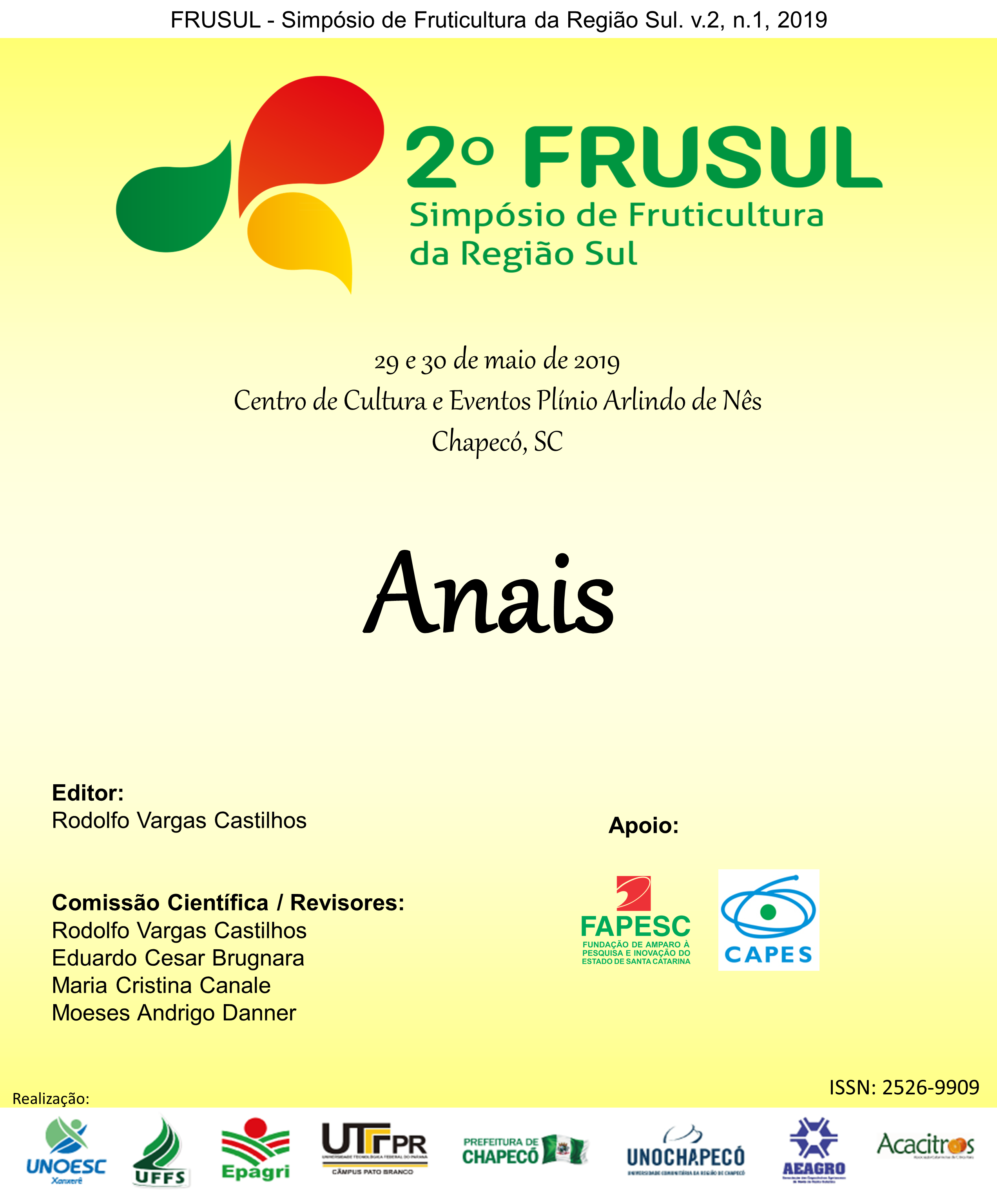Productive evaluation of 'Roxo de Valinhos' fig tree at different planting densities
Abstract
The fig tree (Ficus carica L.), belonging to the family Moraceae, is a species of high added value on the product. The most planted cultivar in Brazil is cv. Roxo de Valinhos, originated in the Mediterranean region. Generally, the literature review suggests that very few studies have been conducted on this culture. Therefore, the aim of this study was to analyze different planting densities in the cv. “Roxo de Valinhos”, evaluating the number of fruits per plant, weight and fruits diameter. The study was conducted in the experimental area, the orchard and fruticulture and post-harvest laboratory at Federal University of the Southern Frontier- Chapecó Campus. The orchard was implanted in 2014, being the year of analysis in question, the fifth productive year. The cultivar was 'Roxo de Valinhos'. The spacings were 1.5; 1.0 and 0.5 meters between plants. A randomized complete block design was used, containing three blocks with five plants each block. The productive cycle evaluated was 2018/19, the data obtained were submitted to the Tukey test with 5% level of significance. For fruit weight, a semi-analytical balance aid (g) was used, the number of fruits was made by counting the plant, while for fruit diameter, the use of the digital caliper (mm) was applied. For the variable number of fruits per plant treatment using 1.5 meters showed better compared to others (89,77 frutos.planta -1). Regarding fruit weight, treatments did not differ significantly between them with a mean of 50.29 g. The same was true for diameter, where a statistical difference between the treatments was not obtained, with a mean of 48.52 mm. It was concluded that the density of planting using a spacing of 1.5 meters between plants presented better results in comparison with the other treatments in relation to number of fruits. However, considering the higher planting density in the other systems, the productivity obtained may be similar or higher.


